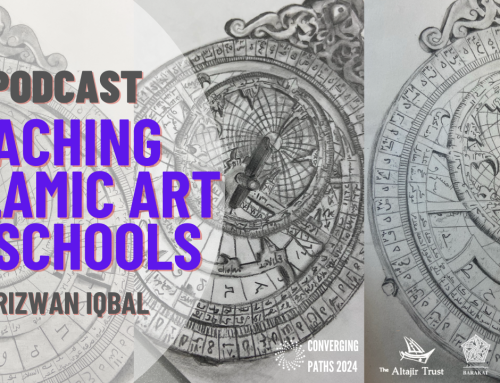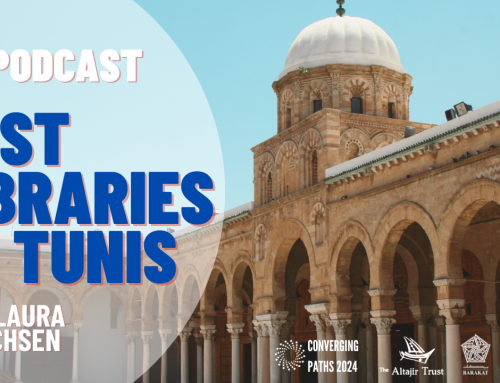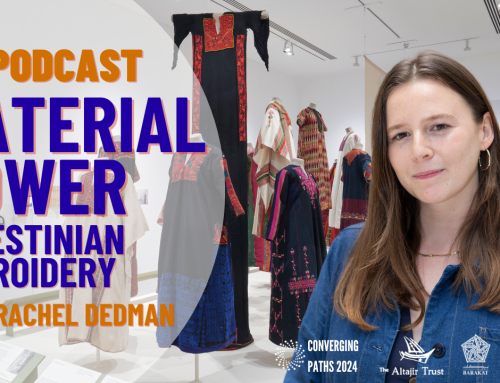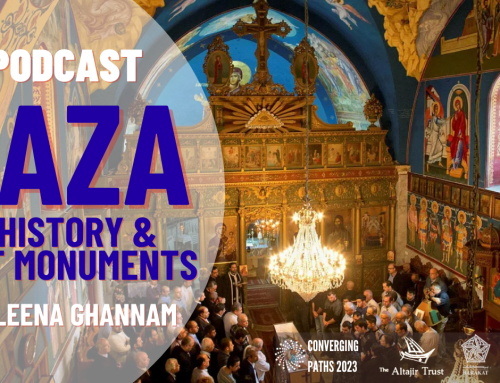Of all the important centres of the historic Islamic World, there is one region that many do not realise was ever Islamic at all: Sicily.
We caught up with a recent grantee of The Barakat Trust, Angelo Castrorao Barba. Angelo has undertaken some particularly fascinating research with our grant, studying excavated material from Islamic Palermo in Sicily to better understand what life was like in this multicultural setting, ruled by the Islamic Emirate of Sicily from 831 to 1091.
We also spoke to the Superintendence of Palermo – the public institution of the Sicilian region in charge of the archaeological heritage in Palermo and its province – who conducted rescue excavations and unearthed this material that Angelo studied. In this interview they explained much about the value of Islamic Sicily and what it’s like to excavate this beautiful Italian island.
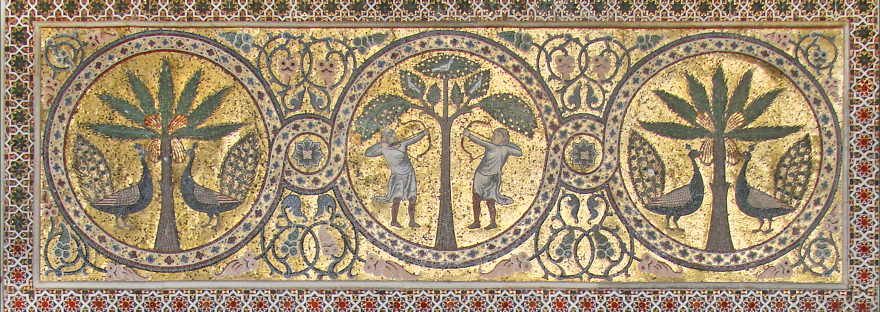
A decorative panel beneath the murqarna of the Islamic-style Fountain Hall at the Palace of Zisa in Palermo, with arabesque and geometric motifs.
Hugo Cook (The Barakat Trust): Thank you for speaking to me about your work – we’re very excited to hear more about it. Italy of course has a long and famous history, but its Islamic past often feels overlooked. What would you say makes the Islamic period such an interesting and significant period of Sicilian history?
Superintendence of Palermo: The Islamic Period certainly represents one of the most fruitful periods in Sicilian history. From the numerous innovations in agriculture, to toponyms, to public architecture which, although built during the following Norman period, has several elements of Islamic tradition such as the muqarnas and the iwan. In Sicily, the imprint of Islamic culture is still seen in everyday life.
Angelo Castrorao Barba: The history of Sicily is a multilayered tale in which the Islamic period represents a moment of extraordinary importance. A new language, a new religion, new people but also new plants or irrigation agricultural techniques will leave a long-lasting mark on Sicilian bio-cultural heritage. This Islamic component of the history of Sicily makes the island a synthesis and a palimpsest of the multicultural history of the Mediterranean.
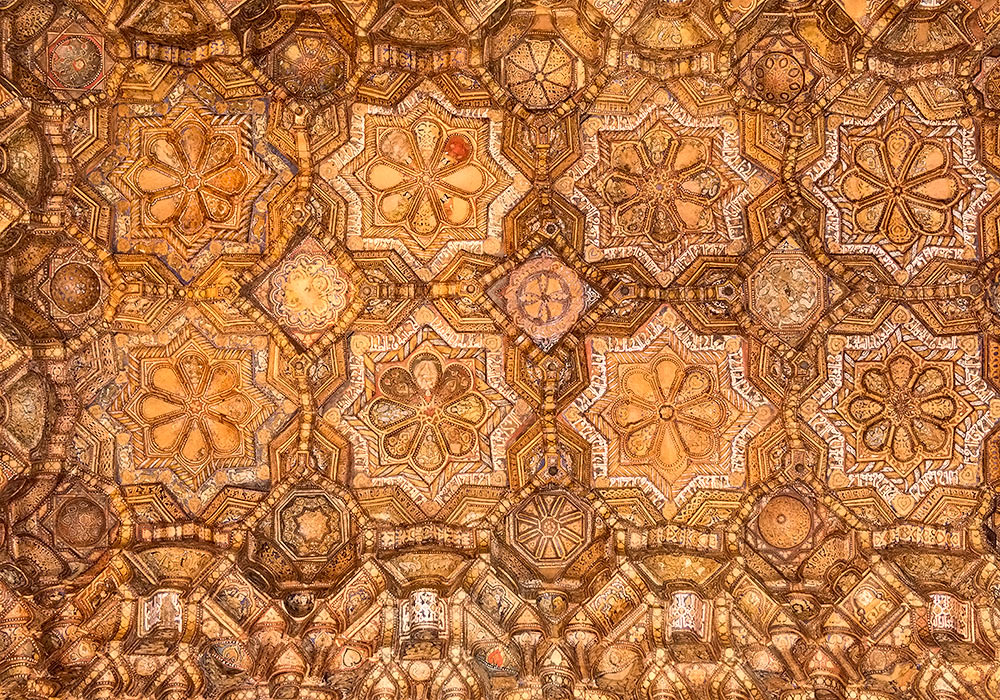
The spectacular wooden muqarnas in the ceiling at Cappella Palatina in Palermo, Sicily. Per-Erik Skramstad © Wondersofsicily.com
HC: Fascinating. Between you, you have excavated and studied some amazing material from suburban Palermo, Sicily. What archaeological find from the sites did you find the most fascinating?
SoP: I like to remember a perfume bottle, a bone flute, some basins with polychrome glazed decoration, but also the vases for processing sugar cane. They are all examples of material culture that tell us about trade, new technology, and new crops introduced to Sicily from the East.
ACB: These archaeological finds are a real mine of information to learn about the daily life of the inhabitants of Islamic Palermo from 9th to 11th century CE.
HC: What do these discoveries tell us about Palermo’s connections with the wider Mediterranean world? How important was Palermo in the Islamic world and beyond?
ACB: Islamic Palermo was at the core of a vast network of trade and a movement of people and things. It was not only the import-export of goods, such as the Islamic amphorae produced in Palermo found in various ports of the Mediterranean, but also the craftsmen: as evidenced by the technological innovation of glazed pottery that most likely occurred thanks to the arrival of North African artisans in Sicily.
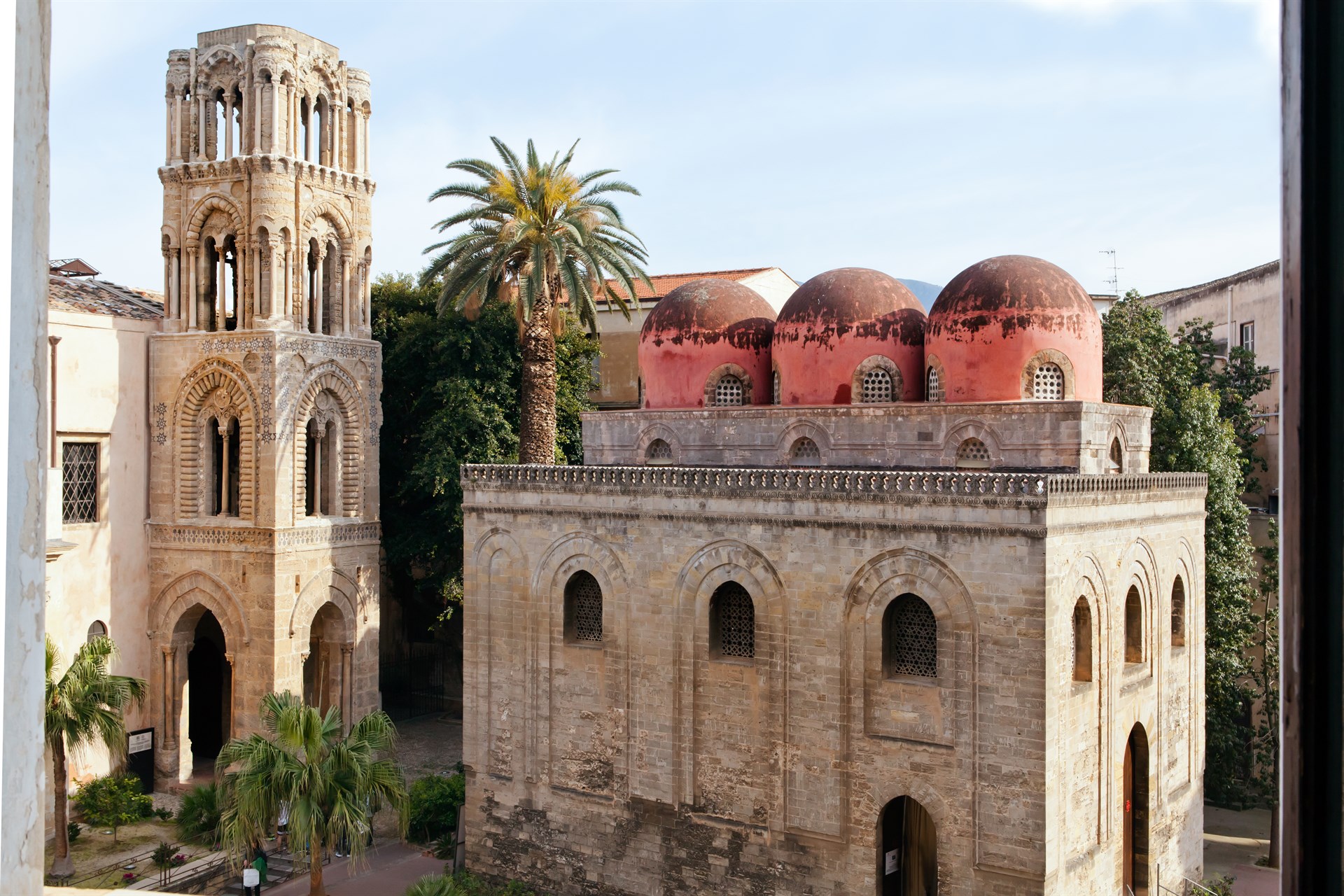
The Church of San Cataldo in Palermo, a notable example of the Arab-Norman style that is unique to Sicily.
HC: The original archaeological excavation was a rescue mission. What are the dangers and obstacles you face when trying to save and preserve all this material culture?
SoP: The post-war expansion has certainly erased many traces of the past. In the 60s/70s, the aggressive and chaotic overbuilding of the cities but also of the coasts certainly destroyed many testimonies of ancient times. Especially in western Sicily there is also a weight of studies focused on the Greek period, with little attention to the older and more recent periods.
HC: Interesting. With that in mind, how much danger faces Islamic period archaeology in Sicily? Is the risk the same as the material from other periods?
SoP: I would say that the archaeology of the Islamic period faces the same risk as the other periods. The fact that in recent decades the attention of scholars has turned to the Middle Ages, and in particular the Islamic and Norman periods, is certainly a positive fact. Thanks to this, our knowledge of the Islamic period’s materials has significantly increased.
HC: It’s important work that you do. How can the public, Italian or otherwise, help keep heritage like this safe?
SoP: The participation of people through the sharing of knowledge is a fundamental aspect of the protection and safety of archaeological heritage. Therefore we should proceed to have greater involvement, initially with the local population in Sicily which, today, is decidedly multiethnic, with a good presence of citizens coming from the Maghreb or being more generally of Islamic faith. Letting citizens discover the history of the territory in which they live is the best protection for archaeological heritage.
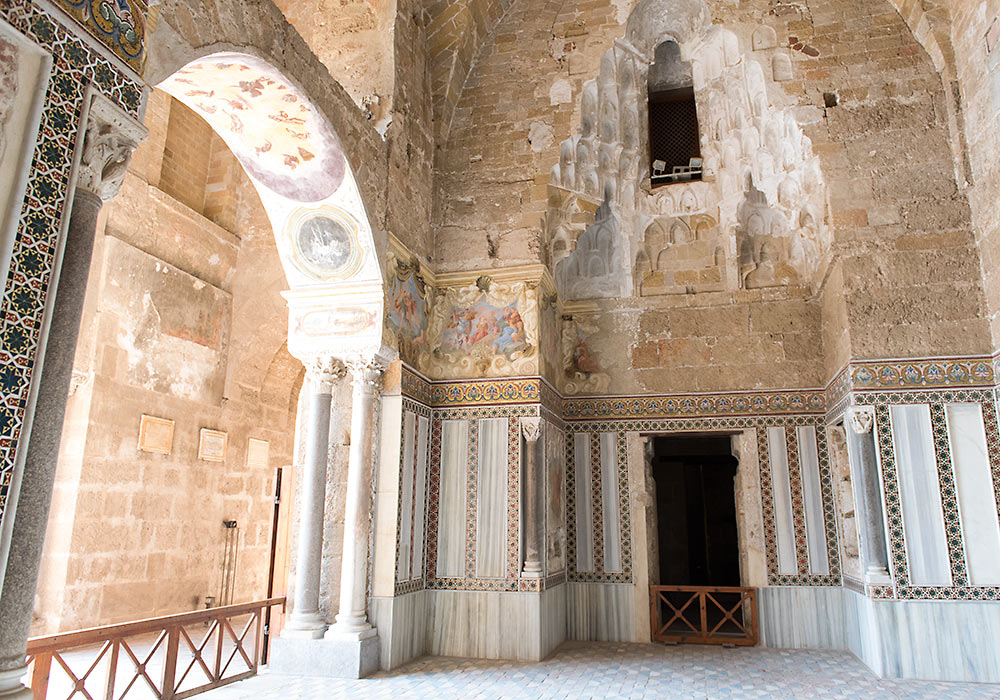
Muqarnas from the Palace of Zisa in Palermo. Per-Erik Skramstad © Wondersofsicily.com
HC: It sounds fantastic. Angelo, you studied the excavated material. How, as a scholar, did you approach this? What methodologies did you use?
ACB: The approach to the study of archaeological finds must be interdisciplinary. We are in fact analyzing different types of finds. An archaeometric approach is essential to characterise and identify raw materials that formed ceramic objects, and therefore understand their origin but also their technological characteristics. To understand eating habits and economic dynamics, however, we also need environmental archaeology to study animal bones, seeds, and coals as indicators of interactions between humans, animals, and the environment. Finally, absolute radiocarbon dating is fundamental to better define the chronology of the contexts analysed, in addition to the stratigraphic data of the excavations.
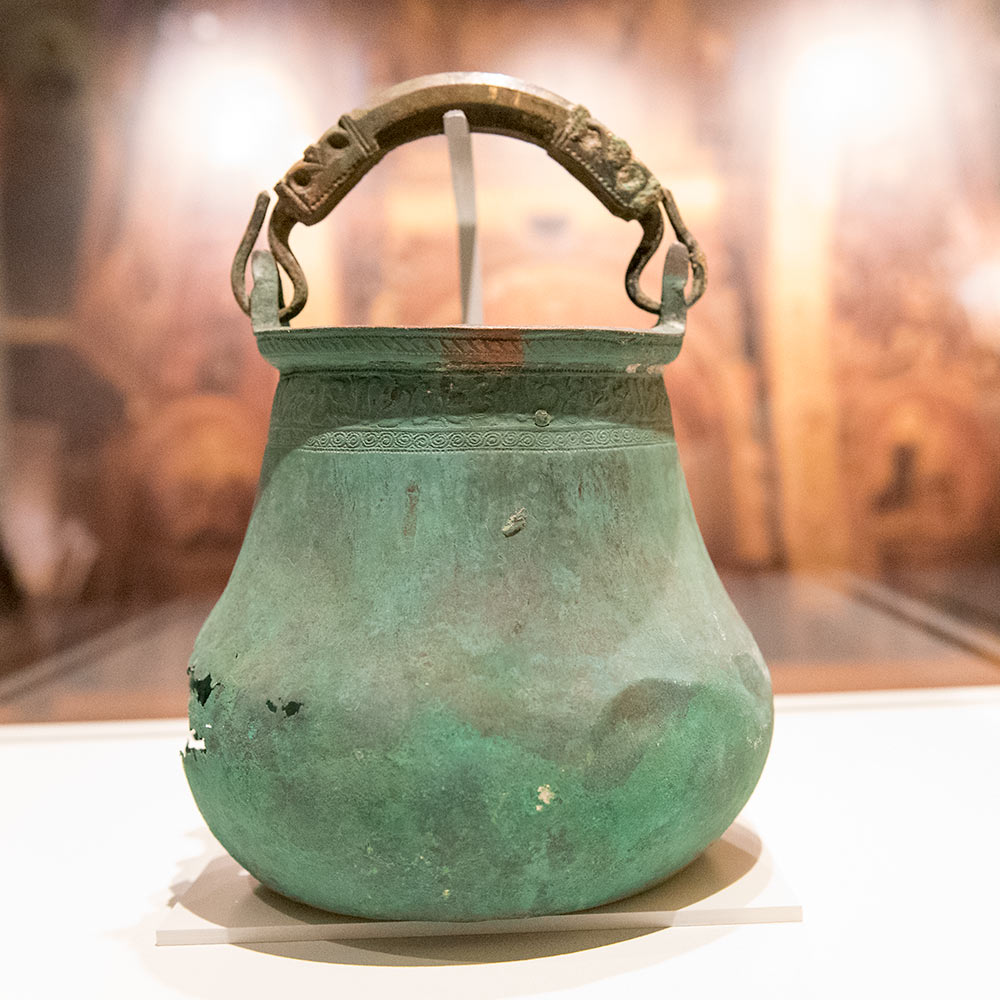
Arab-Norman bronze pail (c. 1100-1200) from the Contrada Bambina shipwreck near Marsala. Beneath the rim, a punched inscription from the Qur’an in early Arabic characters. Per-Erik Skramstad © Wondersofsicily.com
HC: Very multifaceted. What have those zooarchaeological finds revealed about the interactions between animals and humans in the world of Islamic Sicily?
ACB: The zooarchaeological study has allowed a more in-depth picture regarding food habits and, in some cases, economic activities that used animal resources.
HC: How was the diet then compared to today?
ACB: While the almost absent presence of pork in the diet of the inhabitants of Palermo in Islamic times is confirmed by excavations here, the most interesting novelty turned out to be the ubiquitous presence of tuna remains in the analysed contexts. This is so interesting because of the considerable economic role played by tuna fishing in Sicily right up until the modern era. Therefore, the system of catching fish through special traps (tonnara), which constitutes a key element of Sicilian culture, would seem to have been further developed in Islamic times.
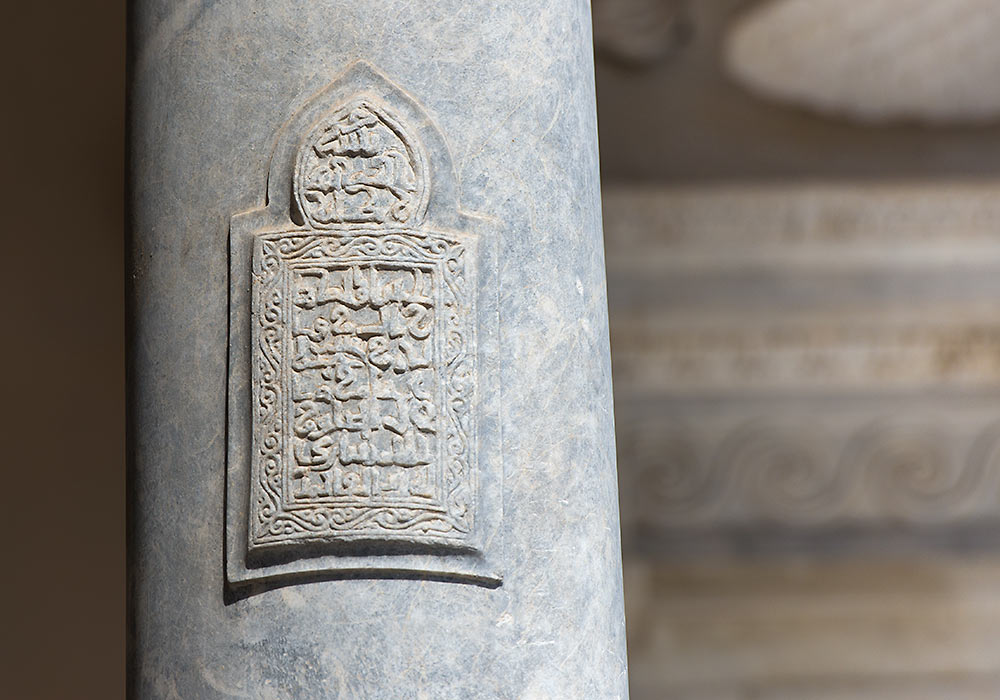
A Quranic inscription on the left column outside the cathedral of Palermo may have been preserved from the earlier mosque. Per-Erik Skramstad © Wondersofsicily.com
HC: Tuna! How amazing to be able to reconstruct what the people of suburban Palermo liked to eat. Of all places, what makes suburbia such an interesting area of study for you?
ACB: The suburban area of Islamic Palermo is an area of very high interest because it is revealing a considerable human presence outside the medieval city walls. The Islamic city is therefore something that we still have to understand and the suburb is also an extraordinary place to connect the city with its hinterland.
HC: It’s certainly interesting. On a practical level, how is archaeology like this productive and useful for suburban Palermo in today’s world?
ACB: We must not forget the public role of archaeology which, in the outskirts of a city like Palermo, can be a new element of cohesion and social participation for a better cultural development of these, unfortunately, often marginalised areas.
HC: Thank you very much, I look forward to reading more about it!



